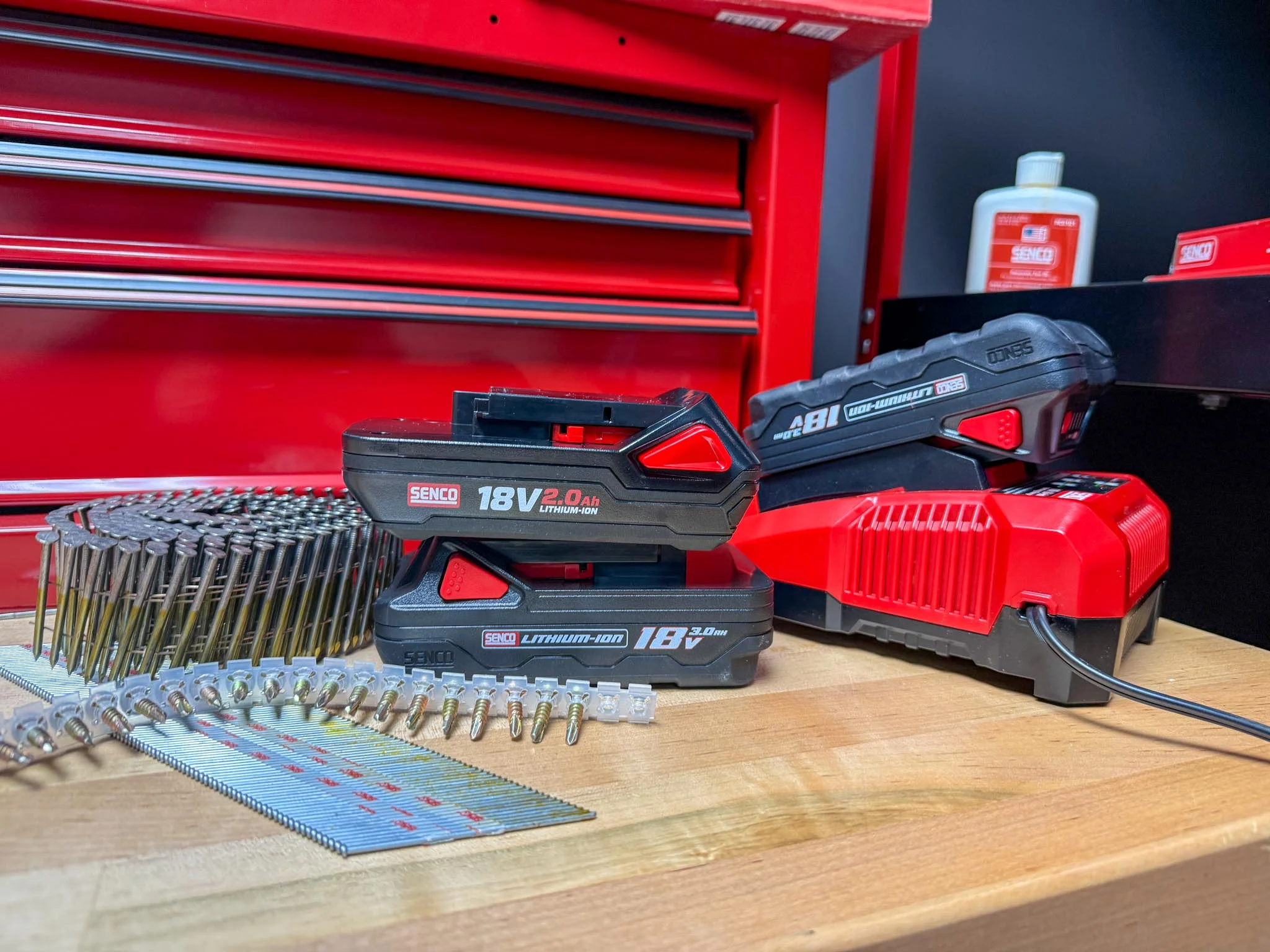How to Get the Most from Cordless Nail Gun Batteries

In today’s construction and industrial workplaces, pneumatic tools must meet high standards for efficiency and dependability. Cordless, battery-powered nail guns and staplers offer advantages in portability and maneuverability over their corded cousins. However, historically, battery performance has limited their overall power and usability due to the frequent need to recharge.
Advances in battery design and technology continue to emerge that help address these drawbacks and make cordless electric nail guns and staplers a more attractive option for even the toughest jobs.
Latest Technologies: The Lithium-Ion Difference
One of the most significant advances is the development of high-capacity lithium-ion batteries that offer longer run times and quicker charging cycles. Some of the latest SENCO models boast fast-charging capabilities that can provide 50% charge in just 20 minutes and full charge in under an hour, minimizing downtime and maximizing productivity. New battery cell designs enhance tool performance by reducing internal resistance, which improves power delivery and minimizes heat generation. Similar advancements are optimizing cell size and weight, allowing for alternative packaging options and supporting the development of more powerful motor designs.
There are several things to keep in mind when choosing a cordless pneumatic battery. Most battery platforms are brand-specific and not interchangeable out of the box. If you’re a fan of a certain pneumatic tool brand, such as SENCO, you will need to use their cordless batteries. Also, when upgrading batteries to higher capacity versions, from a 2Ah to 4Ah for example, make sure the voltage meets specifications and the physical form is compatible.
EXPLORE BATTERIES AND CHARGERS
Terms to Know: Understanding Battery Performance
Speaking of Ah and voltage, there are several common terms to know to understand what you’re getting when buying a battery and how models compare.
Amps – short for amperes, this is a unit of measure for electric current. Think of it as the amount of electricity flowing through a circuit.
Amp-hours (Ah) – this is a measure of how many amps a battery can store and deliver over the course of an hour. Generally, the higher the Ah, the bigger the battery profile is and the longer you can go between recharges.
Volts (V) – this is the force or pressure that pushes electrical current through a conductor. Higher voltage can provide more power, longer runtimes, a smaller motor, and faster charging.
Most cordless pneumatic tool manufacturers offer multiple battery sizes, including 2Ah, 4Ah and even larger sizes. A 4Ah battery is not necessarily more powerful in terms of voltage than a 2Ah, but it does have a higher capacity, meaning it can hold a charge for a longer period. In the case of 4Ah versus 2Ah batteries, the charge should last about twice as long.
Safety First: Prioritizing Worker Well-being
Safety is a non-negotiable aspect of any tool, particularly in high-volume work, where accidents are more likely to happen. The latest cordless pneumatic tool batteries are designed with multiple safety features that mitigate risks associated with misuse or malfunctions. Modern lithium-ion batteries, for instance, often come equipped with integrated protection circuits that prevent overcharging, overheating, short circuits, and abnormal demand. This not only extends battery life but also safeguards operators from potential hazards.
Additionally, batteries and chargers like SENCO’s are manufactured to withstand abuse on tough job sites and provide the user with warning if something has gone wrong. A rubberized overmold helps protect the battery’s internals from impacts and prevents the battery, and the tool it’s attached to, from slipping off surfaces. The charger, which also includes non-skid feet, features LEDs that indicate the state of the charge, temperature delays, and abnormalities with the battery.
Maximizing Cordless Performance: Best Practices for Users
To fully leverage the capabilities of modern cordless pneumatic tool batteries, users should adopt best maintenance practices. Regularly checking battery connections and terminals for corrosion can prevent performance issues and extend the lifespan of the tools. Moreover, establishing a routine charging schedule that avoids complete discharge can help maintain optimal battery health.
Implementing training programs for employees that emphasize the importance of proper tool handling and battery care is also critical. Workers should be educated about the specific requirements of the batteries they use, including proper storage conditions, temperature limitations, and how to recognize signs of wear or damage.
Lastly, staying informed about the latest advancements in battery technology can provide businesses with a competitive edge. By continuously evaluating and upgrading tools and batteries, companies can ensure they are operating at peak efficiency and getting the most from their cordless pneumatic nailers and staplers.

